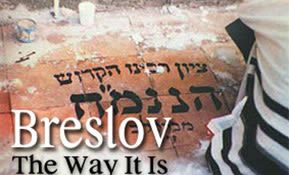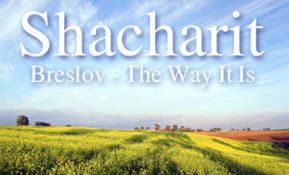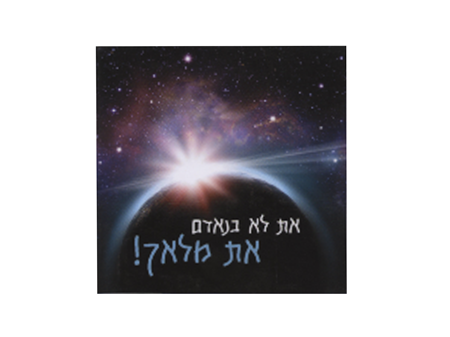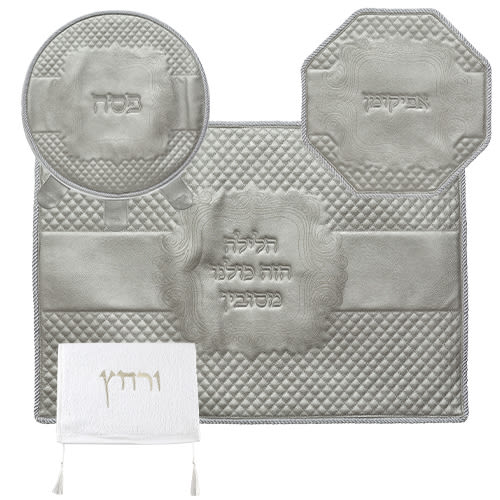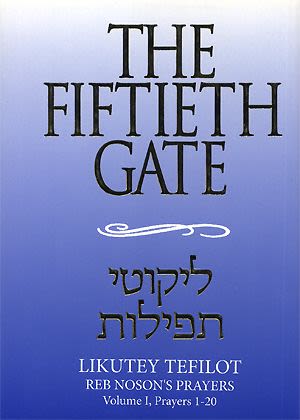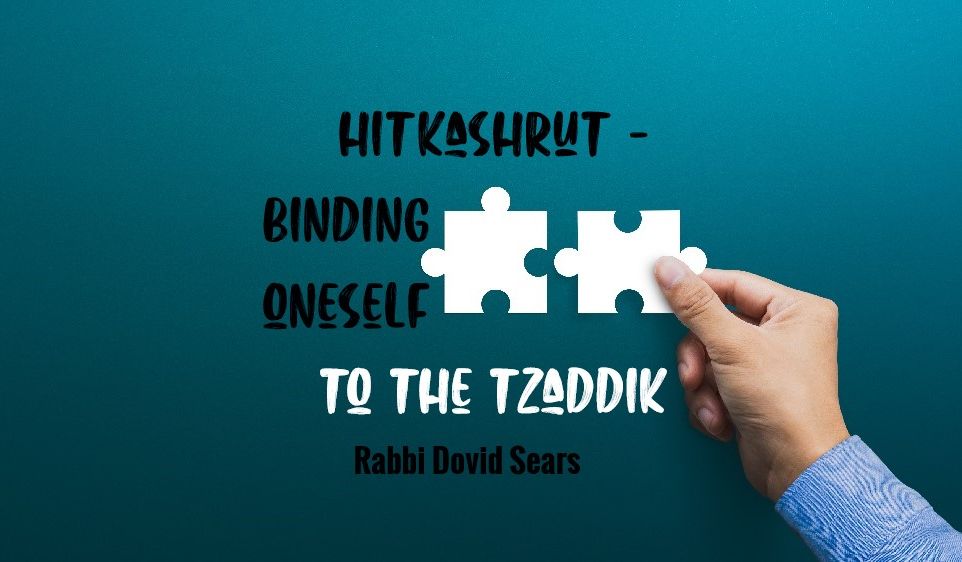
Hitkashrut – Binding Oneself to the Tzaddik
Rebbe Nachman told his followers that it is beneficial to declare before davening: "I hereby bind myself to all the tzaddikim of the generation"...

Le‘ilui nishmat Leib ben Yitzchak Ya’akov Sears, a”h – Yartzeit: 30 Shevat, Rosh Chodesh Adar
Le’ilui nishmat Yosef ben Shmuel Zeitlin, a”h – Yartzeit: 18 Menachem Av
We continue with our new series of minhagim and hanhagot tovot of Breslov.
Binding Oneself to the Tzaddik and to Klal Yisrael
Rebbe Nachman told his followers that it is beneficial to declare before davening (prayer): “I hereby bind myself to all the tzaddikim of the generation” (Likutei Moharan I, 2:6, 9:4; Sichot ha-Ran 296. Similarly, in many Chassidic circles such declarations and kavannot (intentions) have not been uncommon. For example, see Rabbi Meshullam Feivish of Zabarazh, Yosher Divrei Emet II, 33; Rabbi Yechiel Michel of Zlotchov, Torat ha-Maggid mi-Zlotchov, Tefillah 3, p. 320; Rabbi Menachem Nochum of Chernobyl, Me’or Einayim, Beshalach [end], in the name of the Baal Shem Tov; ibid. Yismach Lev, Berakhot 2 [end]; Rabbi Pinchas of Koretz, Imrei Pinchas [Bnei Brak 2003], Sha’ar Parshiyot U-Moadim, Elul, 424; Rabbi Chaim of Chernowitz, Be’er Mayim Chaim, Vayetzei (s.v. vayachalom); Rabbi Chanokh Henikh of Alesk, Lev Same’ach, Hakdamas ha-Mechaber le-Derekh ha-Tefillah; Rabbi Aryeh Leib Tzintz, Kometz ha-Minchah, Vayikra; Rabbi Yerachmiel Yisrael Yitzchak of Alexander, Yismach Yisrael, Be-ha’alosekha; Rabbi Yaakov Yitzchak of Lendov, Emes le-Ya’akov, Bereshis; Rabbi Shaul Brakh of Kashau, Giv’as Shaul, Va-eschanan; Rabbi Eliezer Zusia Portugal of Skulen, Kedushas Eliezer, Tzava’ah 4, Minhagim Tovim; et al).
* * *
This is because the tzaddikim elevate the prayers of the entire Jewish people, conveying each prayer to its proper Heavenly gate (Likutei Moharan I, 9:3).
* * *
Text of the Prayer
Therefore, it has become customary for Breslev Chassidim to recite the following verbal formula before each prayer service (as well as before performing any mitzvah or religious practice, such as immersing in a mikveh, studying Torah, lighting the Hanukah Menorah, etc.):
Hebrew:
הריני מקשר/ת את עצמי לכל הצדיקים האמיתיים שבדורנו ולכל הצדיקים האמיתיים שוכני עפר, קדושים אשר בארץ המה, ובפרט להצדיק האמיתי והקדוש, צדיק יסוד, נחל נובע, מקור חכמה – רבנו נחמן בן פיגא מברסלב – זכותם יגן עלינו ועל כל ישראל. אמן
Hareini mekasher ‘atzmi le-khol ha tzaddikim amitiyim she-be-doreinu, ulekholha-tzaddikim amitiyim shochnei afar, kedoshim asher ba-aretz hemah, u-be-frat Rabbenu ha-Kadosh, Tzaddik Yesod, Nachal Novea, Mekor Chokhmah, Rebbe Nachman ben Feige − zekhutam yagen ‘aleinu ve-‘al kol Yisrael, Amen.
English:
I hereby bind myself to all of the true tzaddikim of our generation, and to all true tzaddikim who rest in the dust, “Holy ones who are interred in the earth” (Tehillim 16:3), and in particular our Holy master, the Holy one, The Tzaddik, the “flowing brook, source of wisdom” (Mishlei 18:4), Rabbi Nachman ben Feige − May their merits shield us, Amen.
The reference to those who “rest in the dust” is based on Likutei Moharan 65:5.
* * *
Alternatively, Rabbi Gedaliah Kenig writes in his letters that his teacher, Rabbi Avraham Sternhartz, used to mention the names of the following preeminent tzaddikim (although this was not written as a precise formula):
“…u-be-frat Moshe Rabbeinu, ‘alav ha-sholom; ha-Tanna Eloki Rebbe Shimon Bar Yochai, Rosh Kol B’nei ha-Golah, Rebbe Yitzchok Luria Ashkenazi; Ish Elokim, Kodesh ha-Kodoshim, ha-Baal Shem Tov; Pe’er ha-Dor, Rebbe Levi Yitzchak mi-Berditchev; Ohr ha-Orot, ha-Nachal Novea Mekor Chokhmah, Rebbe Nachman ben Feiga mi-Breslev, al da’at talmido ha-kadosh, Admor Moreinu Reb Noson ben Naftali Hertz; im Ru’ach Apeinu Moshiach HaShem, Moshiach ben Dovid − zekhusam yagen ‘aleinu ve-‘al kol Yisrael, Amen.”
* * *
It is customary to mention Rebbe Nachman’s name together with his mother’s name, “Rebbe Nachman ben Feige.” There is an oral tradition that this was his express wish. However, some Breslev Chassidim say “Rebbe Nachman ben Simchah / ben Feige.” (The latter custom is mentioned in Si’ach Sarfei Kodesh IV, 146. Reb Nosson alludes to a reason for our using the Rebbe’s mother’s name in Likutei Halakhot, Birkhat haShachar 3:26.)
* * *
In Uman, the nusach of “Hareini mekasher…” was not posted on the wall of the shul or near the Tziyun. Doing so was an innovation of the Polish Breslevers. They wanted to institute this minhag (custom) in Uman, but the zekanim (Breslev Elders) did not allow it. In Yerushalayim, some wished to do so, but Rabbi Levi Yitzchok Bender was very much against it. At one point it was posted on the wall of the shul (synagogue) in Me’ah She’arim, but subsequently it was removed and never replaced (heard from Rabbi Avraham Shimon Burshteyn).
* * *
“Hareini mekasher” is not posted on the wall of the Breslever shul in Tzefat.
* * *
However, it is posted on the wall of the Breslever shtieblach (synagogue) in Williamsburg and Borough Park.
* * *
Rebbe Nachman also instructed us to follow the custom of the Arizal by stating prior to davening: “Hareini mekabel ‘alai mitzvat ‘asei shel ve-ahavta le-re’akha kamokha − Behold, I accept upon myself the positive commandment to ‘love your fellow Jew as yourself.'” Thus, one becomes united with all of Klal Yisrael (Jewish people). He also explained: “Through love and peace, it is possible to speak words of prayer. This is because speech is essentially bound up with peace, as it is written, ‘I shall speak of peace…’ (Tehillim 122:8).” (Likkutei Moharan I, 239; cf. Pri Eitz Chaim, Sha’ar ‘Olam ha-‘Asiyah 1:3:2; Sha’ar ha-Kavannot, ‘Inyan Birkhat ha-Shachar, beginning. Re. the essential unity of all Jewish souls, e.g. see Rabbi Moshe Cordovero, Tomer Devorah, chap. 1, s.v. “le-she’arit nachalato.” This is also one of the foundations of the Baal Shem Tov’s way, as discussed in Toldos Ya’akov Yosef, Kedoshim, et al. The Rebbe states this, as well; e.g. Likutei Moharan I, 260.)
* * *
Rabbi Elazar Kenig has said that one should make this declaration prior to each of the three daily prayer services.
To be continued…
***
With permission from The Breslov Center for Spirituality and Inner Growth




